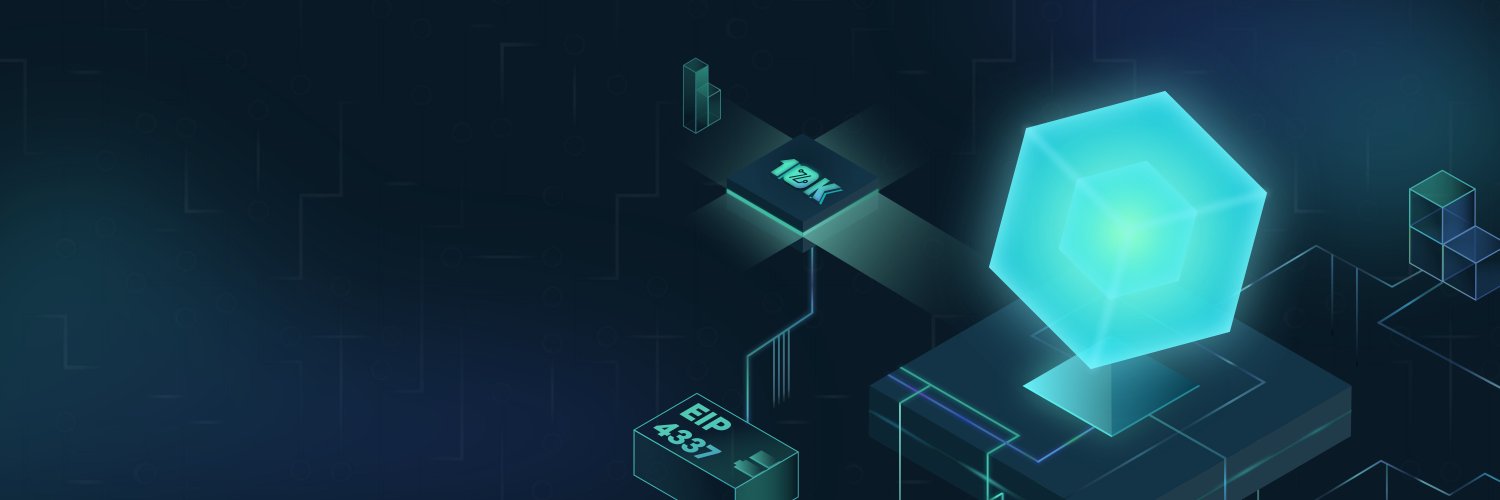Understanding StarkNet
StarkNet is a Layer 2 scaling solution developed by StarkWare, a company dedicated to advancing scalability solutions for blockchains. StarkWare is known for its innovative use of Zero-Knowledge (ZK) technology, and StarkNet leverages their expertise to enhance the scalability and performance of the Ethereum ecosystem, in particular. Let's explore the key components and features that make StarkNet stand out:
1. Layer 2 Scaling Solution
StarkNet is classified as a Layer 2 scaling solution. This means it operates on top of the Ethereum blockchain, which is often referred to as Layer 1. The primary purpose of Layer 2 solutions is to alleviate the congestion on Layer 1 and improve the overall efficiency and performance of the network. StarkNet does this by providing a secondary layer for processing transactions and smart contracts, which significantly reduces the computational load on the Ethereum network.
2. Zero-Knowledge (ZK) Rollup Technology
A cornerstone of StarkNet's architecture is its use of Zero-Knowledge (ZK) Rollup technology. ZK-Rollup solutions bundle multiple transactions together into a single cryptographic proof, which is then submitted to the Ethereum blockchain. This approach dramatically decreases the computational resources required for verifying transactions, ultimately resulting in faster confirmation times and lower transaction fees.
3. EVM Compatibility
Ethereum developers and users can rest easy with StarkNet, as it is fully compatible with the Ethereum Virtual Machine (EVM). This means that existing Ethereum applications, smart contracts, and DApps can be ported to StarkNet with minimal modifications. It ensures a smooth transition for developers and users who are already familiar with the Ethereum ecosystem.
4. The Power of STARK Technology
At the heart of StarkNet is StarkWare's proprietary STARK (Scalable Transparent Argument of Knowledge) technology. STARKs are cryptographic proofs that enable efficient verification of data and computations without revealing sensitive information. These STARK proofs are used to verify the validity of transactions and smart contracts on StarkNet, ensuring both security and scalability. The use of STARK technology makes StarkNet a robust and secure platform.
5. Decentralization and Security
One of the key principles StarkNet adheres to is decentralization and security. StarkNet achieves this by anchoring its data to the Ethereum mainnet, which means that the most critical data is secured by Ethereum's well-established consensus mechanism. This hybrid approach strikes a balance between the scalability benefits offered by StarkNet and the security and decentralization properties of the Ethereum mainnet.
6. Gas Fee Reduction
Perhaps one of the most enticing aspects of StarkNet for Ethereum users is the significant reduction in gas fees. Gas fees have been a major concern on the Ethereum network due to its congestion and high demand. By offloading transactions and computations to the StarkNet layer, users can experience a substantial reduction in transaction costs. This makes interacting with DApps and smart contracts more cost-effective, thereby enhancing the overall user experience on the platform.
7. Rollup Architecture
StarkNet employs a rollup architecture, bundling multiple transactions and smart contract interactions together off-chain before submitting them as a single proof to the Ethereum blockchain. This approach boosts the network's throughput and reduces the computational load on the Ethereum mainnet. Rollup solutions have gained popularity as they offer a balance between scalability and security.
The Potential Impact of StarkNet
The development and implementation of StarkNet have the potential to revolutionize the Ethereum ecosystem and blockchain technology as a whole. Let's take a closer look at the potential impact of StarkNet:
1. Scalability and User Experience
By significantly increasing the transaction throughput and reducing gas fees, StarkNet can greatly enhance the user experience on the Ethereum platform. DApps and smart contracts can operate more efficiently, making it more accessible and cost-effective for users to interact with blockchain applications.
2. Decongesting the Ethereum Network
Ethereum's mainnet has faced congestion issues, leading to high gas fees and slower confirmation times. StarkNet acts as a relief valve, helping to decongest the Ethereum network by offloading a substantial portion of the transaction load to the secondary layer. This not only reduces the strain on Ethereum but also enhances its overall reliability and stability.
3. Adoption and Development
StarkNet's EVM compatibility and ease of transitioning existing Ethereum applications make it an attractive solution for developers. As the ecosystem continues to evolve, we can expect more DApps and smart contracts to migrate to StarkNet, leading to increased adoption and innovation in the blockchain space.
4. Enhanced Security
The integration of StarkWare's STARK technology ensures that StarkNet doesn't compromise on security while offering scalability. Users can have confidence in the integrity of their transactions and smart contracts, knowing that the cryptographic proofs used are robust and trustworthy.
5. Reducing Barriers to Entry
Lower gas fees and faster confirmation times make blockchain technology more accessible to a broader audience. This could lead to a more diverse and inclusive ecosystem as the barriers to entry are reduced, allowing users from various backgrounds to participate in the blockchain revolution.
In conclusion, StarkNet is a promising Layer 2 scaling solution that has the potential to address some of the most pressing issues facing the Ethereum network. It offers a path towards enhanced scalability, reduced transaction costs, and improved user experiences while maintaining the security and decentralization that are crucial for blockchain technology. As the blockchain ecosystem continues to evolve, StarkNet's impact is likely to be felt across the industry, empowering developers and users alike to unlock the full potential of decentralized applications and smart contracts on the Ethereum platform. While blockchain technology is constantly evolving, StarkNet represents a significant step forward in addressing the challenges of scalability and performance on the Ethereum network.

.png)
.png)
.png)
.png)

.png)
.png)
.png)
.png)
.png)
.png)
.png)


![Ninja Ranger Episode 01 - 53 [END] Subttile Indonesia Ninja Ranger Episode 01 - 53 [END] Subttile Indonesia](https://blogger.googleusercontent.com/img/b/R29vZ2xl/AVvXsEgp5LXrLMFHG10fFdhiq6osTqdcskowJPGaZs3OEdY9D62pTNnHJxc4orAY_HkY6a_-7Tbkhds_29vPf8BOeCcbi9WoCcNrIX5NSqa2EOgCJS-LyE4mFHdfg64bM_JOw88Z0KMhkPQEz8o/s72-c/ninja+ranger.png)







